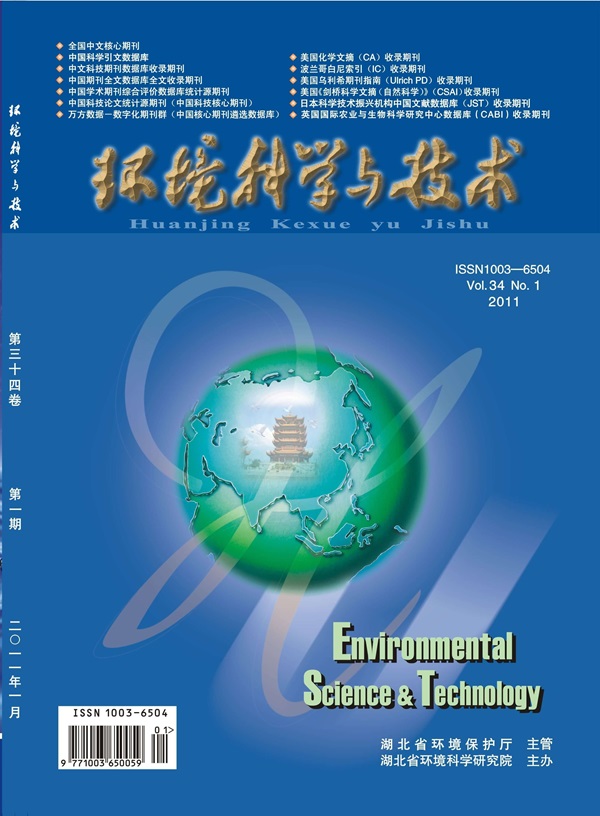Global Geographic Patterns of Soil Microbial Degradation Potential for Polycyclic Aromatic Hydrocarbons
IF 11.3
1区 环境科学与生态学
Q1 ENGINEERING, ENVIRONMENTAL
引用次数: 0
Abstract
Polycyclic aromatic hydrocarbons (PAHs) are toxic and persistent pollutants that are widely distributed in the environment. PAHs are toxic to microorganisms and pose ecological risks. Bacteria encode enzymes for PAH degradation through specific genes, thereby mitigating PAH pollution. However, due to PAHs’ complexity, information on the global degradation potential, diversity, and associated risks of PAH-degrading microbes in soils is lacking. In this study, we analyzed 121 PAH-degrading genes and selected 33 as marker genes to predict the degradation potential within the soil microbiome. By constructing a Hidden Markov Model, we identified 4990 species carrying PAH-degrading genes in 40,039 soil metagenomic assembly genomes, with Burkholderiaceae and Stellaceae emerging as high-potential degraders. We demonstrated that the candidate PAH degraders predominantly emerged in artificial soil and farmland, with significantly fewer present in extreme environments, driven by factors such as average annual rainfall, organic carbon, and human modification of terrestrial systems. Furthermore, we comprehensively quantified the potential risks of each potential host in future practical applications using three indicators (antibiotic resistance genes, virulence factors, and pathogenic bacteria). We found that the degrader Stellaceae has significant application prospects. Our research will help determine the biosynthetic potential of PAH-degrading enzymes globally and further identify potential PAH-degrading bacteria at lower risk.

土壤微生物降解多环芳烃潜力的全球地理格局
多环芳烃(PAHs)是广泛分布于环境中的有毒持久性污染物。多环芳烃对微生物有毒,具有生态风险。细菌通过特定基因编码降解多环芳烃的酶,从而减轻多环芳烃污染。然而,由于多环芳烃的复杂性,关于土壤中多环芳烃降解微生物的全球降解潜力、多样性和相关风险的信息缺乏。在本研究中,我们分析了121个多环芳烃降解基因,并选择了33个作为标记基因来预测土壤微生物群中的降解潜力。通过构建隐马尔可夫模型,我们在40,039个土壤宏基因组组装基因组中鉴定出4990种携带多环芳烃降解基因的物种,其中Burkholderiaceae和Stellaceae是高潜力降解者。研究表明,受年平均降雨量、有机碳和人类对陆地系统的改造等因素的影响,候选多环芳烃降解物主要出现在人工土壤和农田中,在极端环境中较少出现。此外,我们通过三个指标(抗生素耐药基因、毒力因子和致病菌)综合量化了每个潜在宿主在未来实际应用中的潜在风险。发现降解菌Stellaceae具有重要的应用前景。我们的研究将有助于确定全球多环芳烃降解酶的生物合成潜力,并进一步确定潜在的低风险多环芳烃降解细菌。
本文章由计算机程序翻译,如有差异,请以英文原文为准。
求助全文
约1分钟内获得全文
求助全文
来源期刊

环境科学与技术
环境科学-工程:环境
CiteScore
17.50
自引率
9.60%
发文量
12359
审稿时长
2.8 months
期刊介绍:
Environmental Science & Technology (ES&T) is a co-sponsored academic and technical magazine by the Hubei Provincial Environmental Protection Bureau and the Hubei Provincial Academy of Environmental Sciences.
Environmental Science & Technology (ES&T) holds the status of Chinese core journals, scientific papers source journals of China, Chinese Science Citation Database source journals, and Chinese Academic Journal Comprehensive Evaluation Database source journals. This publication focuses on the academic field of environmental protection, featuring articles related to environmental protection and technical advancements.
 求助内容:
求助内容: 应助结果提醒方式:
应助结果提醒方式:


